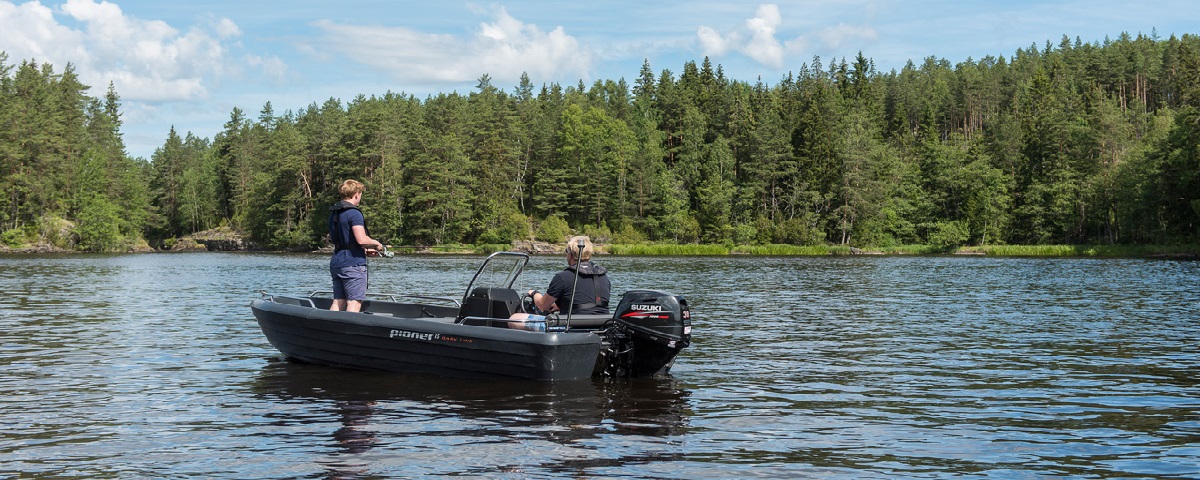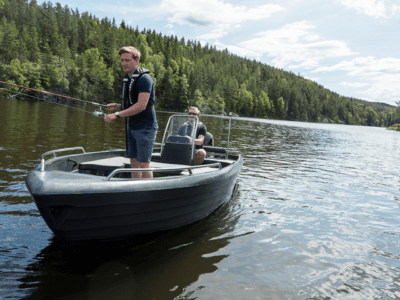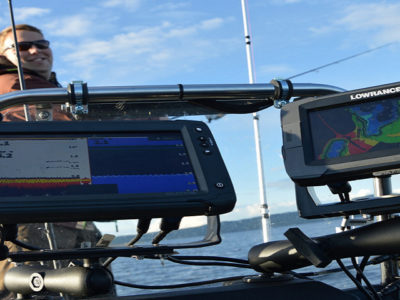Spinning

Spinning is a popular form of fishing for sport, with numerous variations and degrees of difficulty. It is a method anyone can try, the most important thing is to learn how to cast and when you should release the line. The weight of the bait or lure helps you cast the line, which you then reel in again, in the best case with a fish on the hook. The basic requirements are a rod, reel, nylon line or braided line, plus obviously a lure. Spinning can be done from a boat or on land.
To cast effectively, the lure ought to be about 15 cm from the guide at the far end of the fishing rod. Think of the rod movement and the cast as a clock where 12 o’clock is straight above your head. Bring the rod behind you in a controlled movement to 3 o’clock and then swing the rod forward and release the line when the rod reaches 10 o’clock. When you release the line, the weight of the lure makes the line drop into the water and then it’s a case of simply reeling in the line and hoping for a bite.
There is plenty of different kinds of equipment for spinning, with designs to suit everyone, from beginners and children to professional anglers. When deciding what equipment you need, start from where and how you want to fish and how much experience you have. Heavy lures and heavy fish call for a more powerful rod and line. If you are fishing with a jig, a kind of lure, a very light rod and braided line should work well. A braided line is silent and means you can feel even the slightest of movements.
You can buy fishing rods for different casting distances and different weights. They are called Haspel reels or multiplier reels. The reel with the line can either be an open reel, a multireel or an enclosed design. Haspel is the most common. An enclosed reel is particularly suitable for beginners as you only need to hold in and release a button when you cast out. A multireel is best suited to heavier bait and more experienced anglers. A braided line is silent, but can break easily, while a nylon line will stretch and can easily get tangled. You can also buy a so-called invisible line, made of fluorocarbon, that sinks in the water a bit.
Lures are virtually a science in their own right, but the most common are a spoon lure, wobbler, spinner and jig. It can be a good idea to buy lures with a spinlock hook, which means you can add and remove different kinds of bait without having to tie a new knot every time. The popular spoon lure imitates a fish swimming quickly. Varying the speed you reel in the line will give you the best chance of getting a bite. If, on the other hand, you fish at many different depths, a wobbler is a safe bet as it looks like a small fish. Spinners sink down in the water slowly and give off a spinning sound that attracts the attention of fish. You need to work on your technique with a spinner, but experienced anglers say they are the best lures to fish with. When you fish with a jig, you cast it out and let it sink. You then reel it in, in fits and starts, so it keeps touching the bottom. A jig has the hook upwards, which means it is less likely to get snagged on something. It is also heavy, so casting into the wind works well. A jig is a lure that is easy to fish with.





